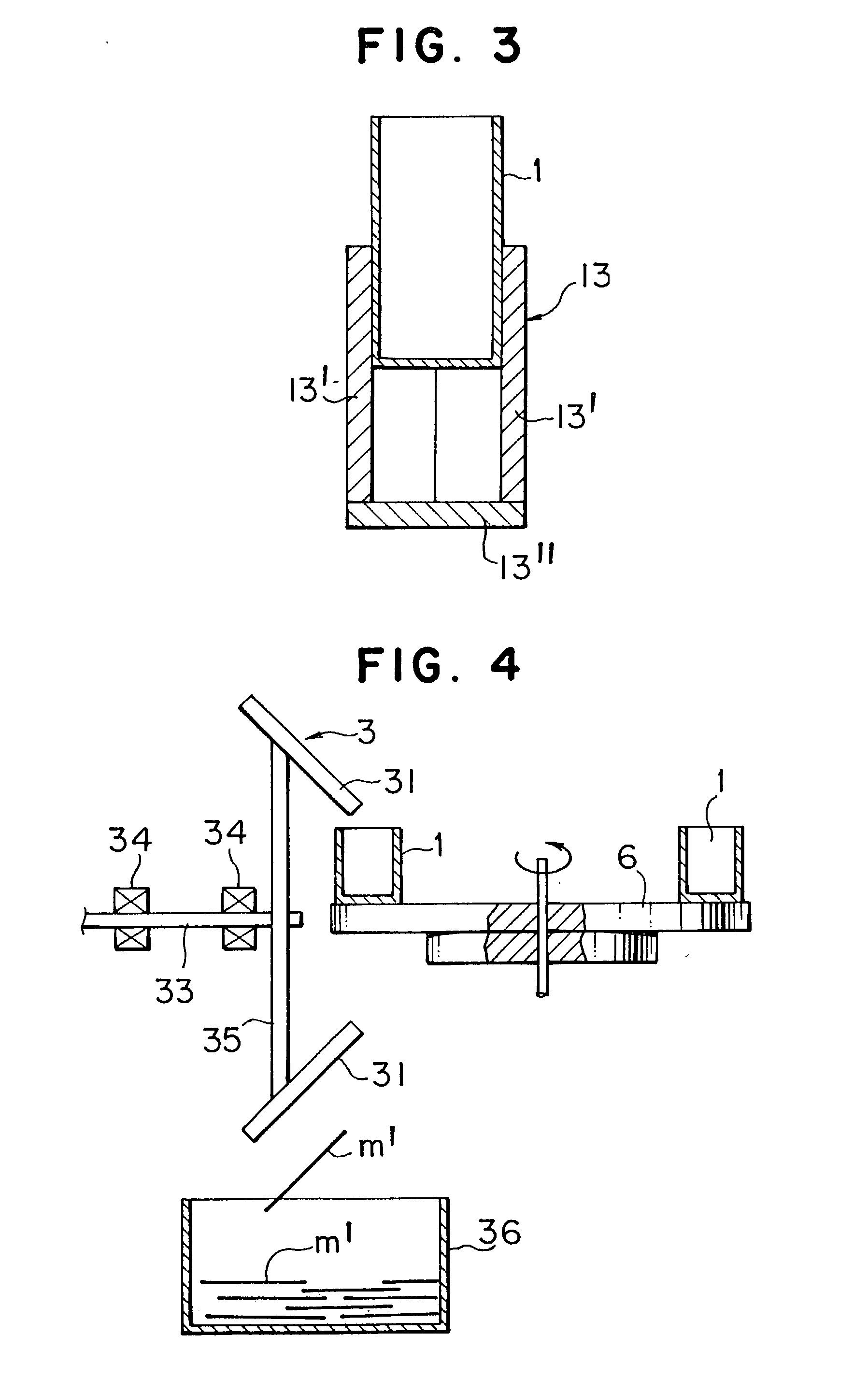Method of producing semi-solid metal slurries
a technology semisolid, which is applied in the direction of metal founding, chemical apparatus and processes, etc., can solve the problems of inability to achieve stable quality of resultant parts, inability to accurately determine the amount of semi-solid metal slurry, and inability to sharply cu
- Summary
- Abstract
- Description
- Claims
- Application Information
AI Technical Summary
Benefits of technology
Problems solved by technology
Method used
Image
Examples
example 2
[0069] Example wherein a motion is applied on a melted metal placed in a slurry preparing container by mechanically stirring the melted metal;
[0070] At 650.degree. C., the same melted metal (AC4C) as in Example 1 was poured into a thermal insulation container formed in an approximately tubular shape of a diameter of 63 mm and a height of 100 mm, to examine (a) a case wherein the melted metal was mechanically stirred with a ceramics stirring rod by hands when the melted metal was at a temperature between 620.degree. C. to 611.degree. C. (for 39 seconds) and (b) a case wherein the melted metal was similarly stirred when the melted metal reached the liquidus temperature. By spontaneously cooling the melted metals (a) and (b) when the melted metals reached 585.degree. C., the metals were charged into water and were rapidly cooled therein. The metal microstructure was observed. Microscopic photographs of the resultant metal microstructure are shown in FIG. 13.
[0071] Under observation of ...
example 3
[0080] Example wherein a combination of two kinds of motions was applied to the melted metal;
[0081] At 620.degree. C., the same melted metal (AC4C) as in Example 1 was used and (a) poured into a thermal insulation container formed in an approximately tubular shape with a diameter of 63 mm and a height of 100 mm, thereby applying a motion to the melted metal, and (b) by stirring then the melted metal with a high frequency induction stirring system for 10 seconds, a motion was applied to the melted metal. Thereafter, when the melted metal reached 585.degree. C., the melted metal was charged into water for rapid cooling, to observe the metal microstructure in the center and superficial layer region, respectively. The metal microstructure thus obtained is shown in FIG. 18. Under observation of such metal microstructure, the primary crystal was granulated in the metal microstructure at the center, while the metal microstructure in the superficial layer was in a dendritic shape, with no s...
PUM
| Property | Measurement | Unit |
|---|---|---|
| Angle | aaaaa | aaaaa |
| Temperature | aaaaa | aaaaa |
| Temperature | aaaaa | aaaaa |
Abstract
Description
Claims
Application Information
 Login to View More
Login to View More - R&D
- Intellectual Property
- Life Sciences
- Materials
- Tech Scout
- Unparalleled Data Quality
- Higher Quality Content
- 60% Fewer Hallucinations
Browse by: Latest US Patents, China's latest patents, Technical Efficacy Thesaurus, Application Domain, Technology Topic, Popular Technical Reports.
© 2025 PatSnap. All rights reserved.Legal|Privacy policy|Modern Slavery Act Transparency Statement|Sitemap|About US| Contact US: help@patsnap.com



